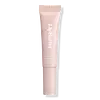What's inside
What's inside
 Key Ingredients
Key Ingredients

 Benefits
Benefits

 Concerns
Concerns

 Ingredients Side-by-side
Ingredients Side-by-side

Diisostearyl Malate
EmollientHydrogenated Polyisobutene
EmollientPhytosteryl/Isostearyl/Cetyl/Stearyl/Behenyl Dimer Dilinoleate
Skin ConditioningCaprylic/Capric Triglyceride
MaskingPolybutene
Butyrospermum Parkii Butter
Skin ConditioningSynthetic Wax
AbrasiveEthylene/Propylene/Styrene Copolymer
Simmondsia Chinensis Seed Oil
EmollientCandelilla Cera
EmollientPunica Granatum Flower Extract
Skin ConditioningGlyceryl Caprylate
EmollientParfum
MaskingPolyglyceryl-3 Diisostearate
EmulsifyingButylene/Ethylene/Styrene Copolymer
Benzyl Alcohol
PerfumingRubus Chamaemorus Seed Oil
Skin ConditioningPentaerythrityl Tetra-Di-T-Butyl Hydroxyhydrocinnamate
AntioxidantTocopherol
AntioxidantDiisostearyl Malate, Hydrogenated Polyisobutene, Phytosteryl/Isostearyl/Cetyl/Stearyl/Behenyl Dimer Dilinoleate, Caprylic/Capric Triglyceride, Polybutene, Butyrospermum Parkii Butter, Synthetic Wax, Ethylene/Propylene/Styrene Copolymer, Simmondsia Chinensis Seed Oil, Candelilla Cera, Punica Granatum Flower Extract, Glyceryl Caprylate, Parfum, Polyglyceryl-3 Diisostearate, Butylene/Ethylene/Styrene Copolymer, Benzyl Alcohol, Rubus Chamaemorus Seed Oil, Pentaerythrityl Tetra-Di-T-Butyl Hydroxyhydrocinnamate, Tocopherol
Bis-Diglyceryl Polyacyladipate-2
EmollientHydrogenated Polyisobutene
EmollientDiisostearyl Malate
EmollientButyrospermum Parkii Butter
Skin ConditioningSynthetic Wax
AbrasiveIsopropyl Palmitate
EmollientCetearyl Alcohol
EmollientCaprylic/Capric Triglyceride
MaskingActinidia Chinensis Seed Oil
EmollientAroma
Candelilla Cera
EmollientCaprylyl Glycol
EmollientCopernicia Cerifera Cera
EmollientCitric Acid
BufferingCitronellol
PerfumingCocos Nucifera Oil
MaskingGeraniol
PerfumingHelianthus Annuus Seed Oil
EmollientPersea Gratissima Oil
Skin ConditioningPolyurethane-79
Punica Granatum Sterols
Skin ConditioningStevioside
MaskingTocopherol
AntioxidantTocopheryl Acetate
AntioxidantTriethoxycaprylylsilane
CI 77891
Cosmetic ColorantBis-Diglyceryl Polyacyladipate-2, Hydrogenated Polyisobutene, Diisostearyl Malate, Butyrospermum Parkii Butter, Synthetic Wax, Isopropyl Palmitate, Cetearyl Alcohol, Caprylic/Capric Triglyceride, Actinidia Chinensis Seed Oil, Aroma, Candelilla Cera, Caprylyl Glycol, Copernicia Cerifera Cera, Citric Acid, Citronellol, Cocos Nucifera Oil, Geraniol, Helianthus Annuus Seed Oil, Persea Gratissima Oil, Polyurethane-79, Punica Granatum Sterols, Stevioside, Tocopherol, Tocopheryl Acetate, Triethoxycaprylylsilane, CI 77891
Ingredients Explained
These ingredients are found in both products.
Ingredients higher up in an ingredient list are typically present in a larger amount.
This ingredient is also known as shea butter. It is an effective skin hydrator and emollient.
Emollients help soothe and soften your skin. It does this by creating a protective film on your skin. This barrier helps trap moisture and keeps your skin hydrated. Emollients may be effective at treating dry or itchy skin.
Shea butter is rich in antioxidants. Antioxidants help fight free-radicals, or molecules that may harm the body. It is also full of fatty acids including stearic acid and linoleic acid. These acids help replenish the skin and keep skin moisturized.
While Shea Butter has an SPF rating of about 3-4, it is not a sunscreen replacement.
Shea butter may not be fungal acne safe. We recommend speaking with a professional if you have any concerns.
Learn more about Butyrospermum Parkii ButterCandelilla Cera isn't fungal acne safe.
This ingredient is an emollient, solvent, and texture enhancer. It is considered a skin-softener by helping the skin prevent moisture loss.
It helps thicken a product's formula and makes it easier to spread by dissolving clumping compounds.
Caprylic Triglyceride is made by combining glycerin with coconut oil, forming a clear liquid.
While there is an assumption Caprylic Triglyceride can clog pores due to it being derived from coconut oil, there is no research supporting this.
Learn more about Caprylic/Capric TriglycerideDiisostearyl Malate is an emollient and most often used in lip products. It comes from isostearyl alcohol, a fatty acid, and malic acid, an AHA.
As an emollient, Diisostearyl Malate helps create a thin film on your skin to trap moisture in. This helps keep your skin soft and smooth.
Hydrogenated Polyisobutene is a synthetic polymer. Polymers are compounds with high molecular weight. Hydrogenated Polyisobutene is an emollient and texture enhancer.
In one study, Hydrogenated Polyisobutene showed better skin hydration levels than Caprylic/Capric Triglyceride. As an emollient, it helps keep your skin soft and hydrated by trapping moisture in.
Hydrogenated Polyisobutene is often used as a mineral oil replacement.
Learn more about Hydrogenated PolyisobuteneSynthetic Wax is created from fossil fuels such as natural gas. It is used to enhance texture, adjust pH, and as an occlusive.
It may also be used as an abrasive ingredient to exfoliate the skin.
Synthetic Wax may not be fungal acne safe.
Learn more about Synthetic WaxTocopherol (also known as Vitamin E) is a common antioxidant used to help protect the skin from free-radicals and strengthen the skin barrier. It's also fat soluble - this means our skin is great at absorbing it.
Vitamin E also helps keep your natural skin lipids healthy. Your lipid skin barrier naturally consists of lipids, ceramides, and fatty acids. Vitamin E offers extra protection for your skin’s lipid barrier, keeping your skin healthy and nourished.
Another benefit is a bit of UV protection. Vitamin E helps reduce the damage caused by UVB rays. (It should not replace your sunscreen). Combining it with Vitamin C can decrease sunburned cells and hyperpigmentation after UV exposure.
You might have noticed Vitamin E + C often paired together. This is because it is great at stabilizing Vitamin C. Using the two together helps increase the effectiveness of both ingredients.
There are often claims that Vitamin E can reduce/prevent scarring, but these claims haven't been confirmed by scientific research.
Learn more about Tocopherol